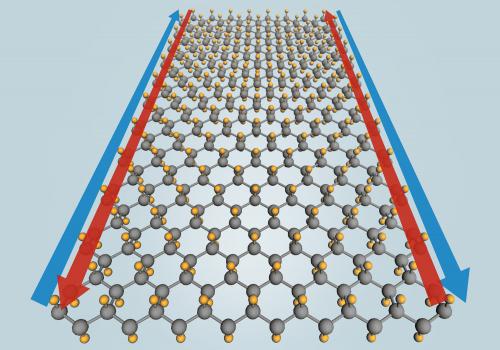2-D Tin Could Be Next Transformative Supermaterial
November 25, 2013
Graphene, the most buzz-worthy supermaterial of the past decade, may have some new competition.
Physicists at Stanford University and the U.S. Department of Energy's SLAC National Accelerator Laboratory think there is potential to produce a material known as "stanene" that might operate at 100% efficiency at room temperature. This essentially means that the material could avoid converting any energy to heat.
In the Physical Review Letters, the researchers explain that the material could be used in electronics applications to increase clock speed while curbing power use. Medical devices could become smarter than ever with the improved circuitry.
Similar to graphene, the novel characteristics of stanene are derived from its single-atom thick geometry, which allows for its impressive conductivity. Unlike graphene, however, stanene is a topological insulator, which acts as an insulator in its interior but has conductive properties along its surface and edges. The material, which is composed of tin and fluorine (shown in gray and yellow, respectively, in the figure below) could enable electricity to be conducted perfectly.
|
Stanene could be the next supermaterial. |
According to Stanford physics professor Shoucheng Zhang, who played an integral role in the research, the first application of the material could be the wires connecting microprocessors. At present, copper wires are used for that purpose. Over time, stanene could be used more broadly in circuits, potentially even replacing silicon within transistors.
The scientists did not name the material after the character Stan Marsh from South Park. Rather, they came up with the name stanene by taking the Latinate word for tin (stannum) and tacking on the suffix used in graphene.
The Extreme Tech website muses about the validity of the 100% efficiency claim, especially since stanene has not been fabricated yet:
"We're not entirely sure how the researchers reached the outlandish claim of 100% efficiency (which we're pretty sure is technically impossible), but perhaps they're just using '100%' to mean 'near-perfect efficiency,' which is certainly possible if you straddle the classical-quantum physics divide."
Stanene is not the only single-atom-thick material to receive attention recently. Last year, another single-atom thick material, silicene, made its debut. Made of silicon atoms, silicene was also described in the Physical Review Letters as having similar properties to graphene. Theoretically, silicene could be integrated more easily in current semiconductor fabrication plants than graphene, but the research is still at a very early stage. The research was described last year as offering the first compelling evidence for "for the synthesis of epitaxial silicene sheets on a silver substrate."
Brian Buntz� is the editor-in-chief of MPMN. Follow him on Twitter at @brian_buntz and Google+.
About the Author(s)
You May Also Like


